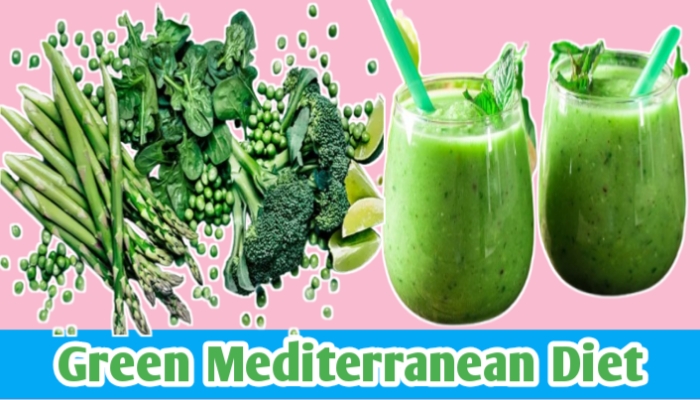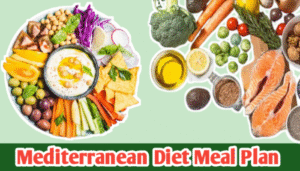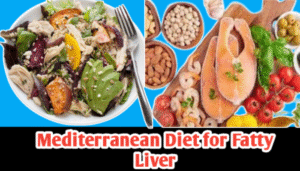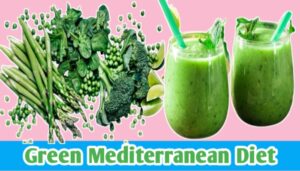The Green Mediterranean Diet is an evolved version of the traditional Mediterranean diet, emphasizing plant-based foods, especially green vegetables, while maintaining the classic benefits of heart-healthy fats, whole grains, and lean proteins.
This diet is designed to maximize nutrient density, antioxidants, and anti-inflammatory compounds, making it ideal for weight management, cardiovascular health, liver support, and longevity. It is flexible, sustainable, and suitable for people seeking a more plant-forward approach while preserving Mediterranean lifestyle principles.
1. Principles of the Green Mediterranean Diet
The Green Mediterranean Diet follows specific guidelines that enhance its health benefits:
1.1 Emphasis on Plant-Based Foods
- The majority of the diet comes from vegetables, fruits, legumes, and whole grains.
- Plant-based meals improve fiber intake, gut health, and metabolic function.
1.2 High Intake of Green Vegetables
- Focus on leafy greens, broccoli, kale, spinach, zucchini, and cruciferous vegetables.
- Rich in antioxidants, vitamins, and minerals that support detoxification and reduce inflammation.
1.3 Healthy Fats
- Primary fat source: extra virgin olive oil.
- Include nuts, seeds, and avocado for monounsaturated and polyunsaturated fats.
1.4 Whole Grains and Legumes
- Prefer brown rice, oats, quinoa, barley, beans, and lentils.
- These provide fiber, protein, and sustained energy, supporting metabolic health.
1.5 Limited Red Meat and Processed Foods
- Red meat is consumed sparingly; processed foods, fried foods, and refined sugars are minimized.
1.6 Fresh Herbs and Spices
- Herbs like basil, oregano, rosemary, parsley, and spices like turmeric and garlic enhance flavor and antioxidant intake.
2. Health Benefits of the Green Mediterranean Diet
The diet offers numerous scientifically backed health benefits:
2.1 Weight Management
- High fiber and nutrient-dense foods promote satiety.
- Plant-forward meals help reduce calorie intake naturally.
2.2 Heart Health
- Olive oil, nuts, and seeds improve cholesterol profiles.
- Reduces risk of heart disease, stroke, and hypertension.
2.3 Reduced Inflammation
- Cruciferous vegetables, leafy greens, and herbs provide anti-inflammatory compounds, lowering chronic disease risk.
2.4 Liver and Kidney Support
- Fiber-rich plant foods aid in detoxification and reduce fat accumulation in the liver.
- Helps maintain kidney function by reducing processed food intake.
2.5 Longevity and Disease Prevention
- Rich in antioxidants, polyphenols, and micronutrients.
- Associated with lower risk of diabetes, obesity, and certain cancers.
3. Core Food Groups in a Green Mediterranean Diet
A Green Mediterranean Diet includes the following essential food groups:
3.1 Leafy Greens and Cruciferous Vegetables
- Examples: Spinach, kale, broccoli, Swiss chard, collard greens.
- Benefits: Detoxification, anti-inflammatory, high in fiber and micronutrients.
3.2 Fruits and Herbs
- Examples: Berries, citrus fruits, apples, parsley, basil, rosemary.
- Benefits: Antioxidants, vitamin C, flavonoids, flavor enhancement.
3.3 Whole Grains
- Examples: Quinoa, brown rice, barley, oats, whole-wheat bread/pasta.
- Benefits: Fiber, B vitamins, sustained energy, improved gut health.
3.4 Legumes and Plant-Based Proteins
- Examples: Lentils, chickpeas, beans, tofu, tempeh.
- Benefits: Protein for muscle repair, satiety, and metabolic health.
3.5 Healthy Fats
- Examples: Extra virgin olive oil, avocado, walnuts, almonds, chia seeds, flaxseeds.
- Benefits: Heart health, anti-inflammatory, vitamin absorption.
4. Green Mediterranean Diet vs Traditional Mediterranean Diet
While the Green Mediterranean Diet builds on the traditional diet, it has key differences:
4.1 Protein Sources
- Traditional: Moderate fish and poultry, occasional red meat.
- Green version: Focus on plant-based proteins, minimal fish/poultry, rarely red meat.
4.2 Focus on Green Plant Foods
- Traditional: Includes all colorful vegetables and fruits.
- Green version: Greater emphasis on greens and cruciferous vegetables for detox and antioxidants.
4.3 Environmental Benefits
- Reduced reliance on animal products lowers carbon footprint.
- Promotes sustainable, eco-friendly eating habits.
5. Sample Green Mediterranean Meal Plan
A practical daily meal plan for a Green Mediterranean Diet:
5.1 Breakfast
- Green smoothie: Spinach, kale, banana, chia seeds, almond milk.
- Whole-grain toast with avocado and tomato slices.
5.2 Mid-Morning Snack
- Handful of walnuts and green apple slices.
5.3 Lunch
- Quinoa salad with broccoli, green beans, chickpeas, avocado, olive oil, and lemon dressing.
5.4 Afternoon Snack
- Carrot and cucumber sticks with hummus.
5.5 Dinner
- Stir-fried tofu with spinach, zucchini, bell peppers, and olive oil.
- Side of barley or brown rice.
5.6 Optional Dessert
- Fresh berries with a sprinkle of flaxseeds.
6. Green Mediterranean Diet Recipes
6.1 Breakfast Recipes
- Green Smoothie Bowl: Spinach, kale, frozen banana, almond milk, topped with chia seeds and pumpkin seeds.
- Avocado Toast with Herbs: Whole-grain bread, mashed avocado, cherry tomatoes, fresh basil, drizzle of olive oil.
6.2 Lunch Recipes
- Quinoa & Chickpea Salad: Quinoa, chickpeas, steamed broccoli, green beans, olive oil, lemon, parsley.
- Green Buddha Bowl: Brown rice, spinach, zucchini, edamame, avocado, tahini dressing.
6.3 Dinner Recipes
- Stir-Fried Tofu with Greens: Tofu, kale, spinach, zucchini, garlic, olive oil, lemon juice.
- Green Lentil Soup: Lentils, spinach, celery, parsley, garlic, olive oil.
6.4 Snack Recipes
- Mixed nuts (almonds, walnuts, pistachios)
- Hummus with celery, cucumber, or bell pepper sticks
- Green smoothies or green tea with fresh fruit
7. Tips for Adopting and Sticking to a Green Mediterranean Diet
7.1 Meal Prep Strategies
- Batch cook whole grains, legumes, and roasted greens.
- Pre-chop vegetables for quick salads and stir-fries.
7.2 Grocery Shopping Tips
- Focus on fresh leafy greens, cruciferous vegetables, legumes, whole grains, and healthy fats.
- Avoid processed foods, refined grains, and sugary snacks.
7.3 Eating Out Guidance
- Choose dishes with vegetables, legumes, olive oil, and whole grains.
- Minimize fried foods, creamy sauces, and refined carbs.
7.4 Variety and Color
- Rotate green vegetables and herbs for nutrient diversity.
- Experiment with seasonal vegetables and plant-based proteins.
7.5 Mindful Eating
- Eat slowly, savor flavors, and practice portion control.
- Combine diet with physical activity, hydration, and stress management for optimal results.
8. Common Mistakes to Avoid
- Over-reliance on processed plant-based foods.
- Neglecting green vegetables and fiber.
- Excessive use of refined grains or added sugars.
9. Conclusion
The Green Mediterranean Diet is a plant-forward, nutrient-dense approach to health, combining the benefits of traditional Mediterranean eating with a focus on greens and anti-inflammatory plant foods.
Emphasizing leafy vegetables, whole grains, legumes, healthy fats, and herbs, while minimizing animal products and processed foods, you can achieve weight management, heart health, liver support, and longevity.










